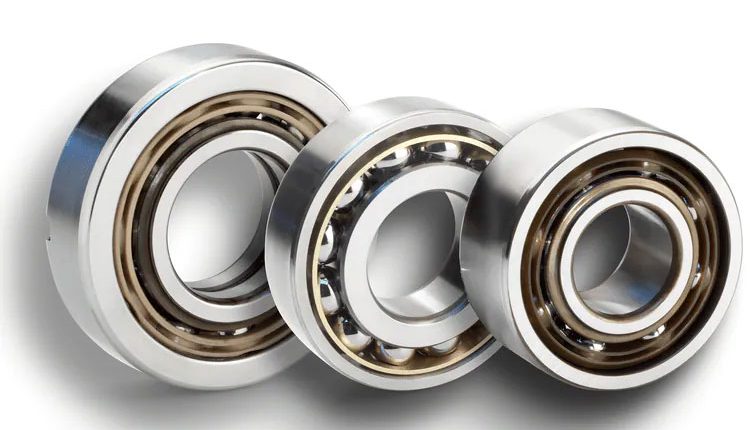Optimize your Operating Profit through Rotary Machine Healthcare
Author: D. K. SEN, Bearing Technologist, CEO, ZKL Bearings (India) Pvt. Ltd.
A Rolling Bearing is the heart of a rotary machine. So long as the bearing remains healthy, the rotary machine remains in productive mode. But as soon as the bearing fails, the machine comes to a standstill – resulting in downtime and the associated loss of production. If it happens regularly, the result will be evident in the reduced Operating Profit.
The core concept of maintenance of a rotary machine, therefore, should be focused on the maintenance of bearings. Today, several generalized maintenance philosophies are practiced in the engineering industry. However, the machine maintenance philosophy that is found to be the most effective is “Bearing Centred Maintenance” (BCM).
A Rolling bearing is designed to withstand fatigue caused by continuous application of a periodic load over a long period of time. Keeping in mind the arduous and demanding operating conditions that it has to withstand during operation, the bearing will be handled and stored properly, used with components having commensurate quality, fitted without damaging it, lubricated correctly and maintained carefully, so as to eliminate possibilities of other modes of premature failures such as Wear, Plastic Deformation, Corrosion or Fracture.
Pre – Installation Checks: Rolling Bearings are precision products and must be fitted to correctly dimensioned components for good performance and service life. New bearing need not be washed prior to installation, unless compatibility with the Lubricant to be used is an issue.
Bearing installation and handling: Take care when removing old or damaged bearings from their shafts so as not to damage the shaft surface where the new bearings will be installed. Do not use Hammers, chisels or Gas Torch for removal of bearings, as this may lead to irreparable damage to the shaft. Use scientific dismounting tools such as Mechanical / Hydraulic Pullers, Oil Injection Pumps etc., wherever possible.
Clean all housings, shafts, sleeves, keyways, etc., before attempting to install a new bearing. Do not use emery paper on shaft where the bearing will seated. Inspect the shafts and housing bore for damage / taper / ovality / out-of-roundness/ inaccurate tolerance. Abutments on the shaft / housing should be square to the axis.
Install new bearings in as clean and dry an environment as possible. Do not use cotton waste for any cleaning job in the bearing maintenance room. Use of lint-free cloth for wiping metallic surfaces is recommended. Ingress of any kind of contamination into the bearing at this stage will result in a shorter bearing life cycle.
Properly align bearings with shafts. Never push or pound on bearing surfaces. Use scientific mounting tools such as Fitting Tools, Induction Heaters, etc, as the case may need, in order to ensure safe installation of the bearings.
Initial lubrication procedures
Never assume the manufacturer has properly lubricated the bearing. The new bearings are usually shipped with a coating of a rust preventive oil only. It is only Lubricated-for-life bearings (indicated by a suffix 2Z or 2RS etc) that are supplied along with a suitable quality and quantity of grease. Follow the recommendation of the bearing manufacturer regarding grade, quantity and method of lubrication.
Re-lubrication of a bearing: You must preferably use the same lubricant as what is in use. Do not mix different lubricants without ascertaining their compatibility.
How lubricant waiting for future use is treated and stored will be a key factor in the life expectancy of equipment. Lubricants should be stored in moisture- and temperature-controlled environments, free of dust and chemical exposure.
Contamination of a lubricant is likely to happen during transfer from one point to another. Failure to exercise care in this process will nullify the attention given previously. There are a number of ways to properly refill grease guns. Using a scoop or paddle from a container is the oldest technique. It involves spooning grease from a storage container and tamping it into the grease gun to remove air bubbles. This method is most likely to introduce contaminants into the grease, especially when performed in the field. It is not a recommended method except in the most dire of circumstances.
Using tube refills is the most common method of refilling a grease gun. It involves removing the empty tube and installing a new, compatible tube of grease into the grease gun. Take care to clean dirt and old grease from the canister and handle assembly before installing a clean, new tube of grease. Perform this task in as clean and dry an environment as possible.
When refilling from a storage container using mechanical or hydraulic pumps, grease is pumped mechanically from the storage container directly into the portable grease gun. When care is taken to clean off the port on the grease gun and delivery hook up from the pump, this is the fastest and safest method of grease transfer.
Assuring that the correct grease is introduced into bearings may involve coding systems. Labels, numbers, tags, or colour-coding on bearing housings that indicate what type of grease is being used can be very helpful to the lubrication technician. Ensure that grease guns are matched up with the coding system on equipment. New employees should be trained on the matching system before any lubrication task is performed. This is an easy system to implement and minimizes the chances of introducing non-compatible greases into the bearing.
Amount of lubricant that a bearing needs is much smaller than what is popularly believed. It is the fear of ingress of contamination that results in use of a quantum much higher than what important to calibrate each grease gun and note the volume of grease each gun delivers with one full pump.
Contamination control
Never allow dirt, dust, water or other contamination to enter the bearing.
Bearings must be protected by suitable seals fitted in the bearing housing. Do not allow the seal to get dry at the point where it in contact with the shaft. This leads to wear of the seal / shaft and subsequent ingress of contamination through the gap. A seal once removed, must be very carefully examined before being reused.
A seal is also a wearable part and needs maintenance. Follow the recommendation of the bearing manufacturers in this regard.
A Bearing is the heart of a rotary machine. It needs the same kind of respect and care as we accord to our own heart – or perhaps even better than that.

For more information, Website : www.zklindia.com



